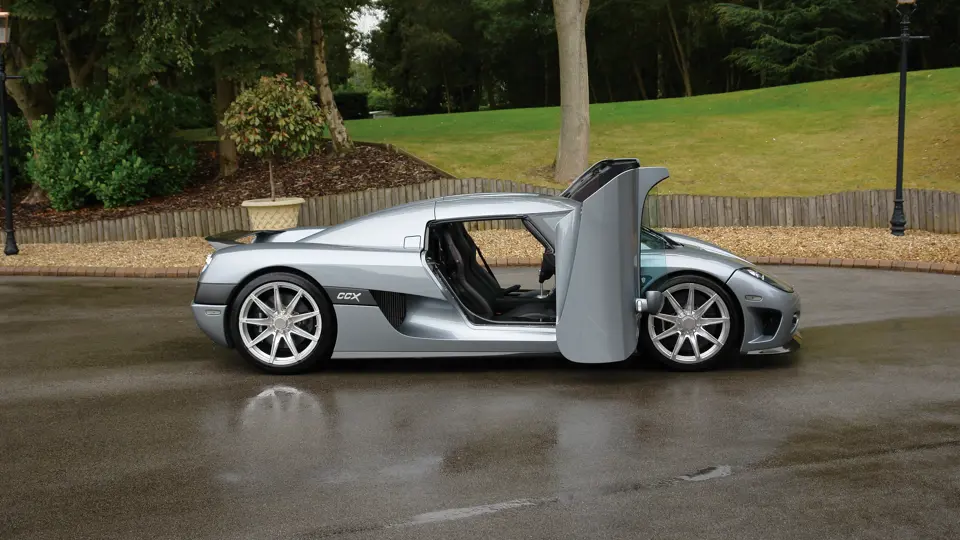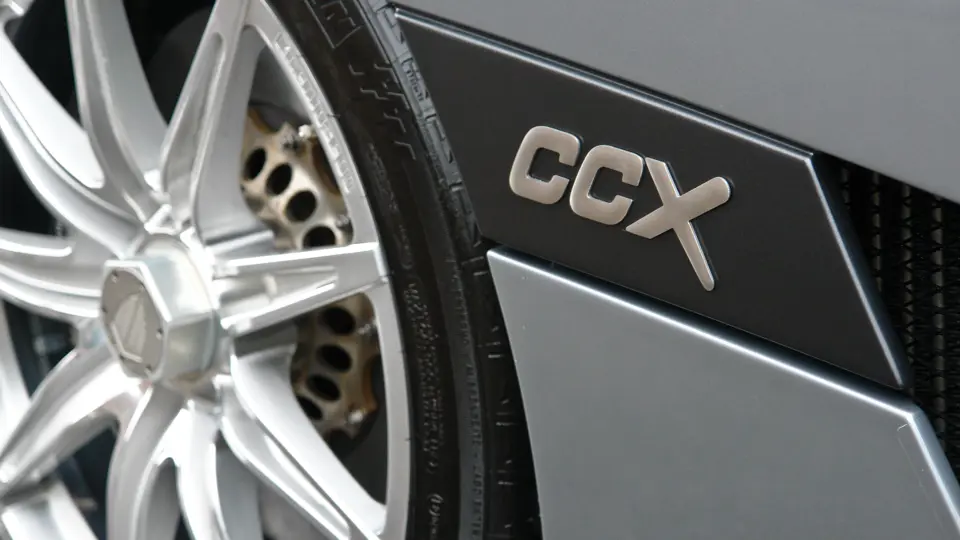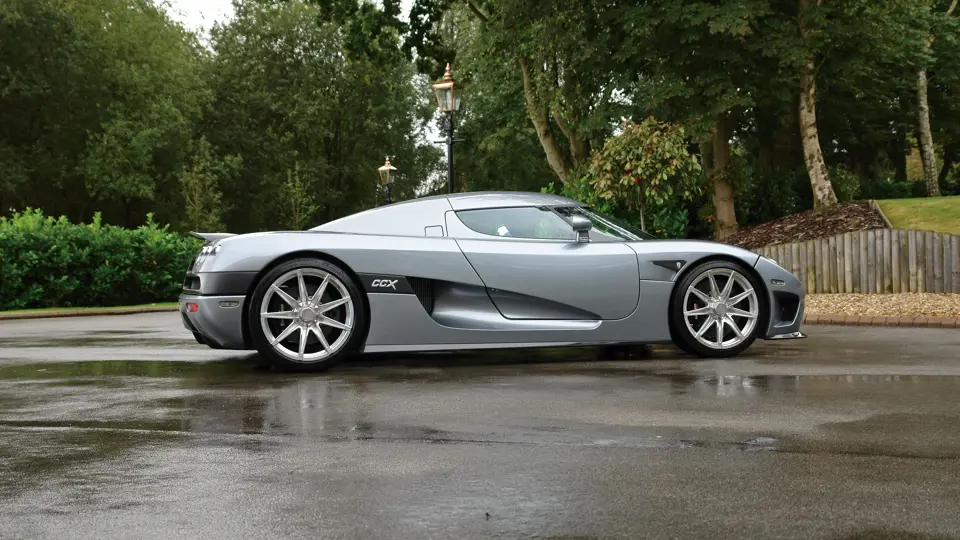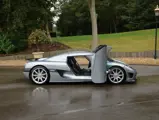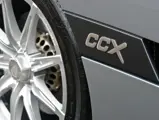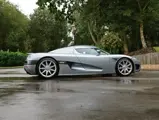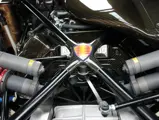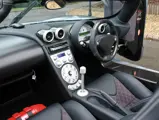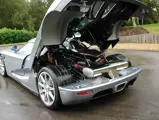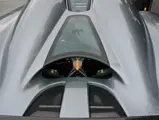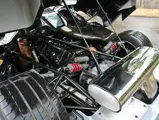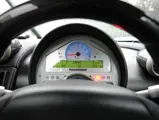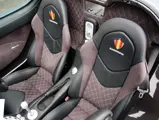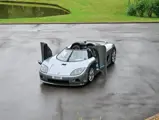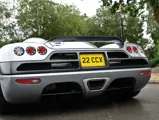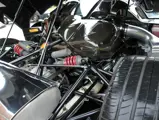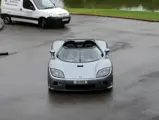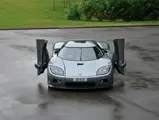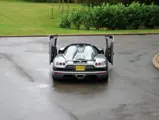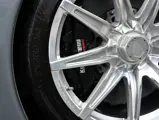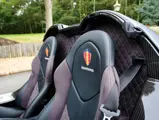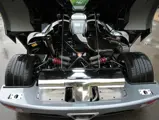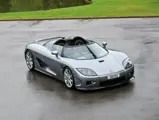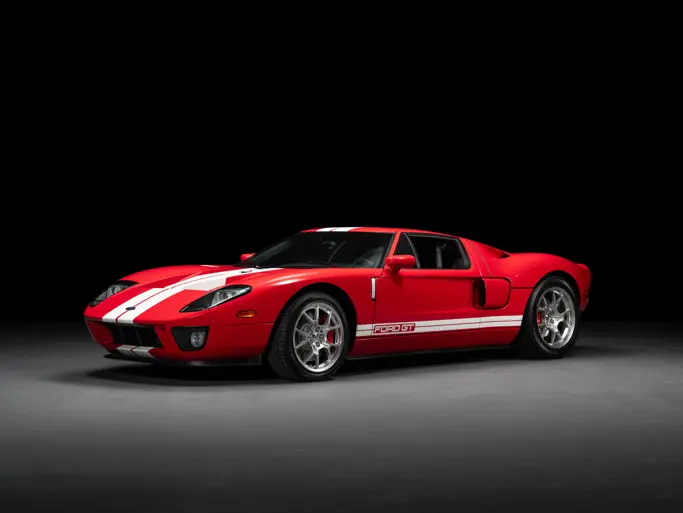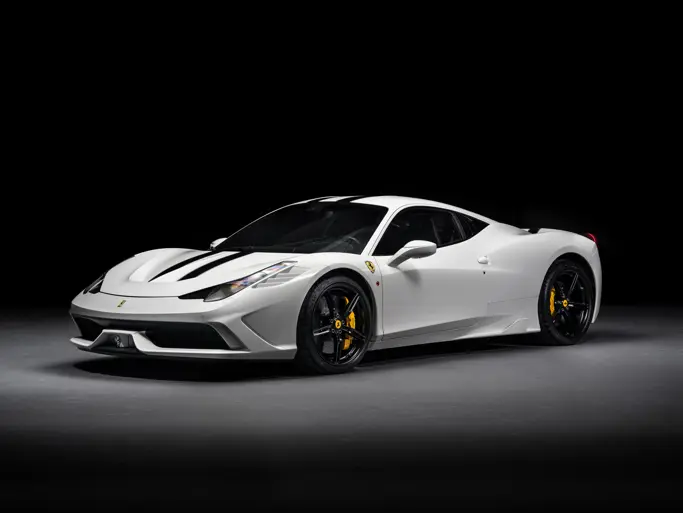806 bhp, 4,700 cc twin-supercharged DOHC V-8 engine, six-speed transmission, four-wheel independent suspension, and four-wheel carbon-ceramic disc brakes. Wheelbase: 104.7 in.
• One of only eight right-hand drive examples
• 1,700 miles from new
• Numerous desirable upgrades
The idea of building one’s own supercar to compete with the likes of Ferrari, Lamborghini, and McLaren would generally be considered ludicrous, what with the monumental strides these companies have made in automotive technology and performance over the past decades. How could one man’s vision compete with such established sporting pedigree and record-setting engineering?
From time to time, however, someone does indeed attempt such a feat and, on even rarer occasions, succeeds brilliantly. Such is the case with the Koenigsegg. Christian Koenigsegg created his supercar company in his own name in 1994; his aspiration was to build nothing short of the greatest supercar in history. Over the next three years, with help from a small but highly skilled group, a prototype was constructed using a radical carbon fibre tub and a litany of automotive engineering firsts. This car, named the Koenigsegg CC (Competition Coupé), was first publicly displayed at the Cannes Film Festival in 1997, and the reaction from public and press alike was overwhelming. Confident his cars would find buyers, Christian left Cannes with nothing other than production on his mind.
The first Koenigsegg customer car arrived in 2002, under the moniker CC8S. This car was entirely hand-built and set the stage for the minimalistic, clean, efficient, and elegant styling that would characterise all future Koenigseggs. Over the two year production run, only six examples were constructed, two of which were right-hand drive. The chassis was made of carbon fibre reinforced Kevlar and honeycombed aluminium, much the same way as a Formula One car. It featured a removable targa-style hard top, eliminating the need for an open or closed variant. No supercar is complete without a sexy pair of doors; Lamborghini has its scissors and Mercedes its Gullwings, while Koenigsegg has “dihedral synchro-helix” actuating doors.
Succeeding the CC8S was the CCR. The two cars shared many characteristics, with everything on the CCR improved, with tuned suspension, larger brakes, bigger wheels, and greater aero-work creating significantly more down force. All these upgrades were made necessary because the 4.6-litre aluminium block, twin supercharged V-8 had been tuned to produce an astonishing 806 brake-horsepower. It would be this car that would dethrone the McLaren F1 as the fastest production car ever built, with a top speed of 242 mph—a record that had held for eight years. Only 14 examples would be built before Christian Koenigsegg’s unwavering commitment to build the greatest supercar of all time had him create a third iteration: the CCX, with “X” commemorating the tenth anniversary of the first drive of the original CC.
Although similar in appearance, the exterior of the CCX was completely remodelled. This was not a cosmetic modification made to freshen the appearance of the car; rather, it was the result of a dedicated effort to eliminate everything that did not serve a dedicated function. A flat underside and venture tunnels in the back helped reduce the coefficient of drag to an incredibly low 0.30, while increasing down-force to 60 kg at the front of the car at 120 mph and 65 kg at the rear. Interior comfort was improved with better ergonomics, and an additional two inches of headroom was added to accommodate a helmet or taller drivers.
This car would be the first Koenigsegg to meet global emissions and crash safety standards. It could also run on 91 octane fuel and still produce identical power figures to the CCR. Amazingly, this engine is capable of accelerating the car from naught to 60 mph in 3.2 seconds and return 14 mpg in the combined cycle.
In the hands of Top Gear’s infamous “Stig”, a CCX fitted with an optional rear wing managed to lap the Top Gear track in a blistering 1:17.60—toppling the Pagani Zonda F Roadster from its pedestal. In fact, the car sat atop the record board for nearly two years, a record time that its greatest rival, the Bugatti Veyron, would be unable to best. With this achievement, Koenigsegg became known globally and has since been regarded as the absolute zenith in “supercardom”. A litany of Guiness Book of World Records would be broken with the CCX, including an astonishing 0–300–0 km/h time of just 29.2 seconds.
The Konigsegg offered here is CCX #7042. It is one of only 27 CCXs produced and eight delivered in right-hand drive. It has had only two owners from new and has only accumulated 1,700 miles on the odometer. It is fitted with upgraded nine spoke forged aluminium alloy rims, carbon fibre sideskirts, and the optional “Top Gear” carbon fibre rear wing, as it was officially renamed by the factory following the record. With a full factory service, this car would be eligible for an extended warranty.
As Koenigsegg is nearing its 20th anniversary, it is inarguable that Christian has succeeded in creating a record-breaking product. The CCX is proof of this, and as the car that earned the world’s attention and introduced millions to the tiny Swedish supercar company, its offering at auction is a very special opportunity indeed, particularly in this rare and highly sought after specification.
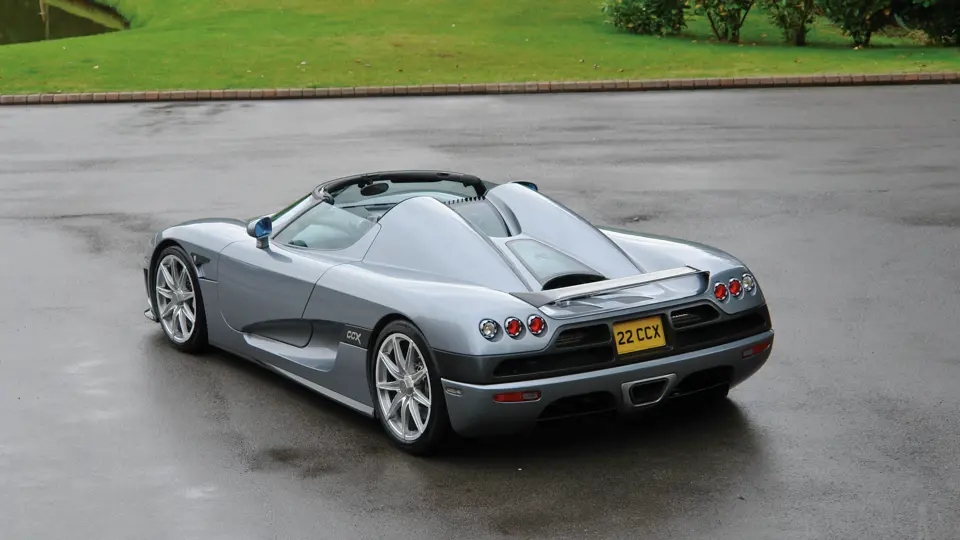



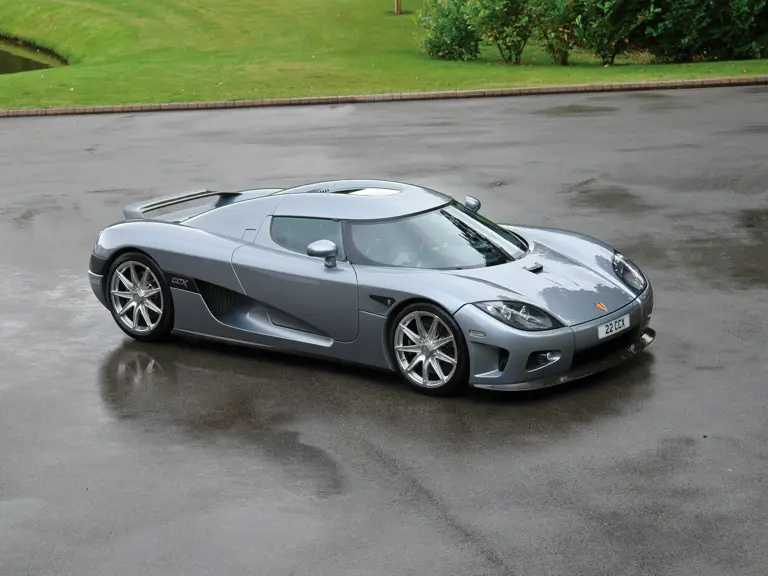
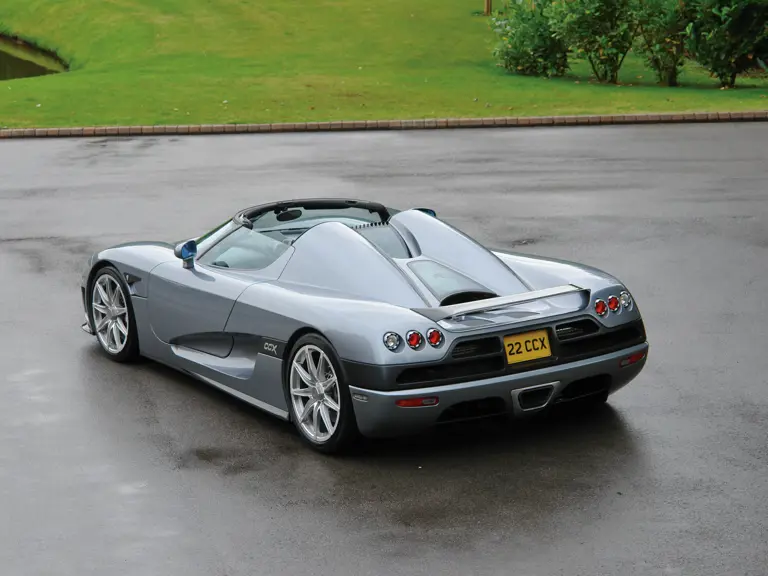
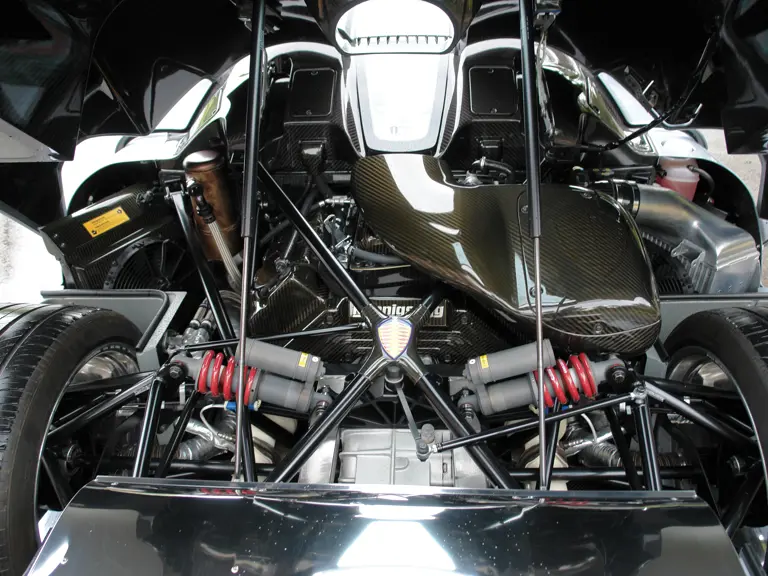
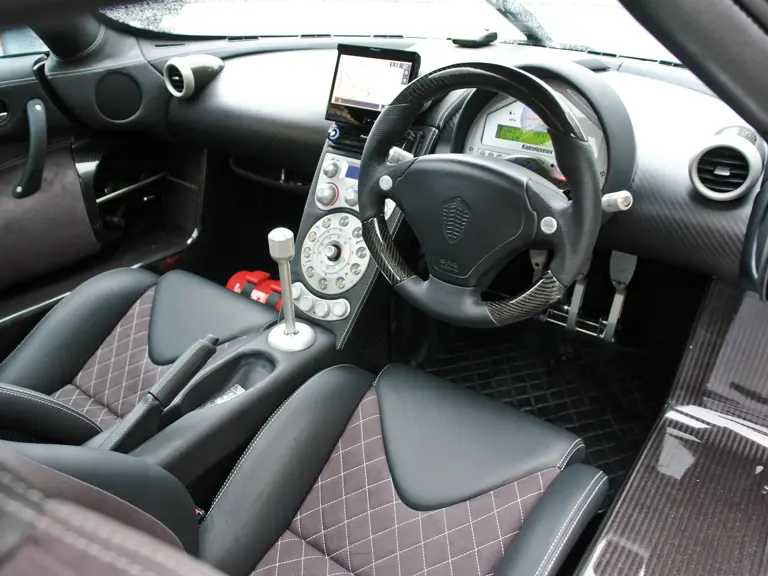
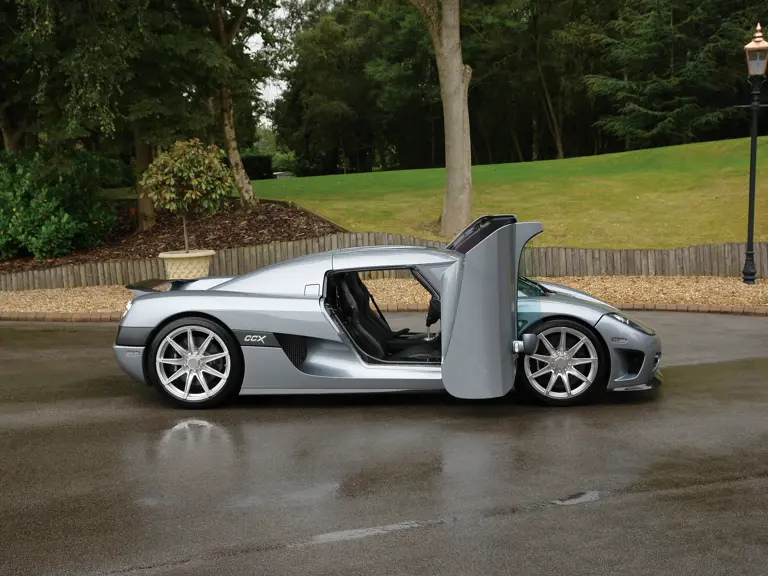
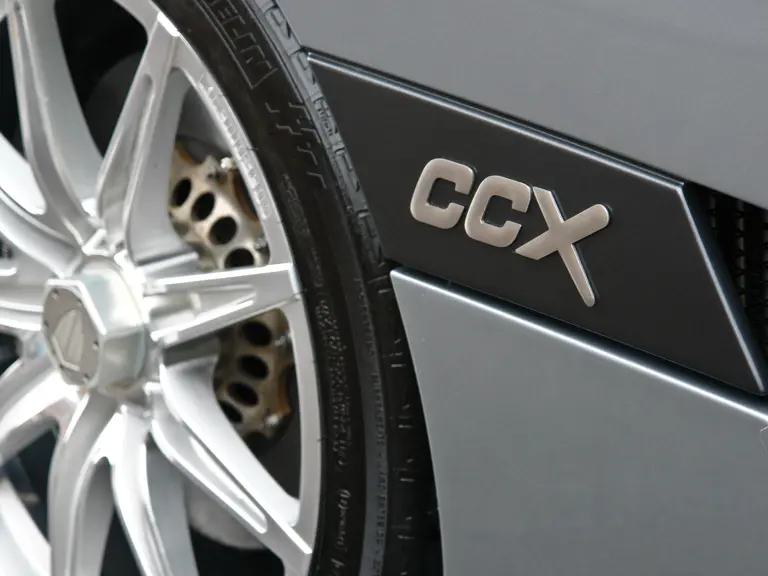
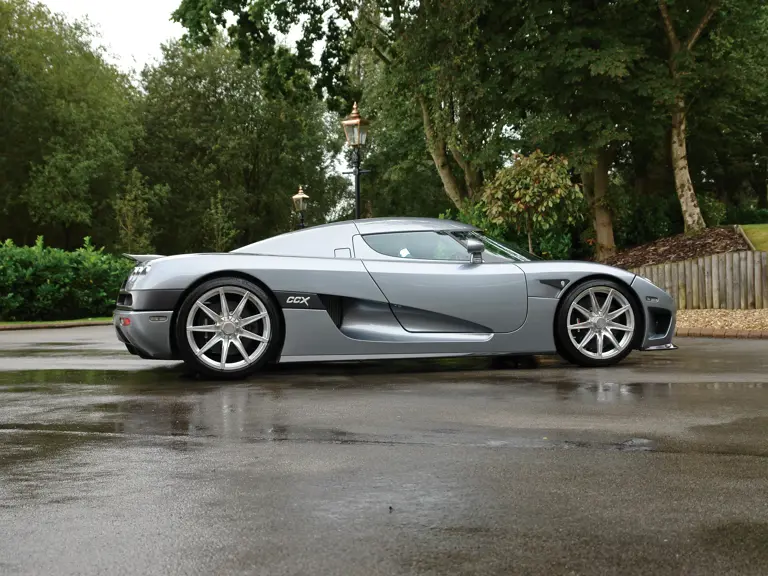

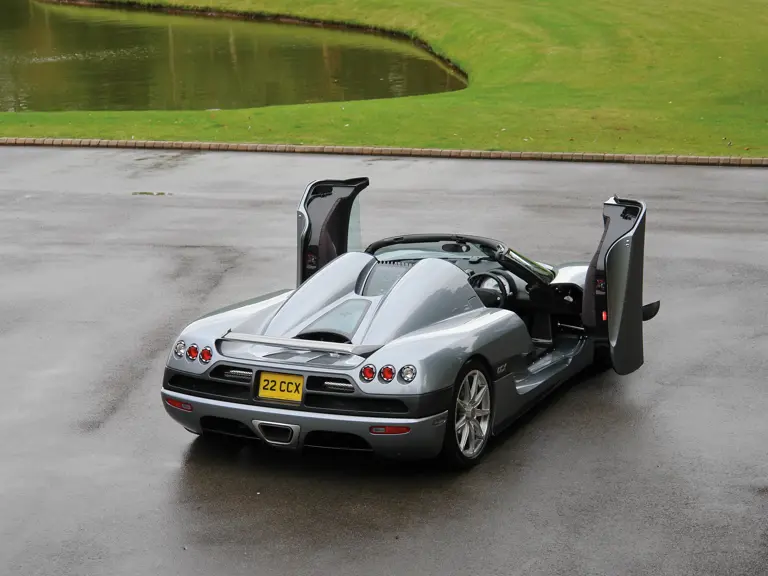
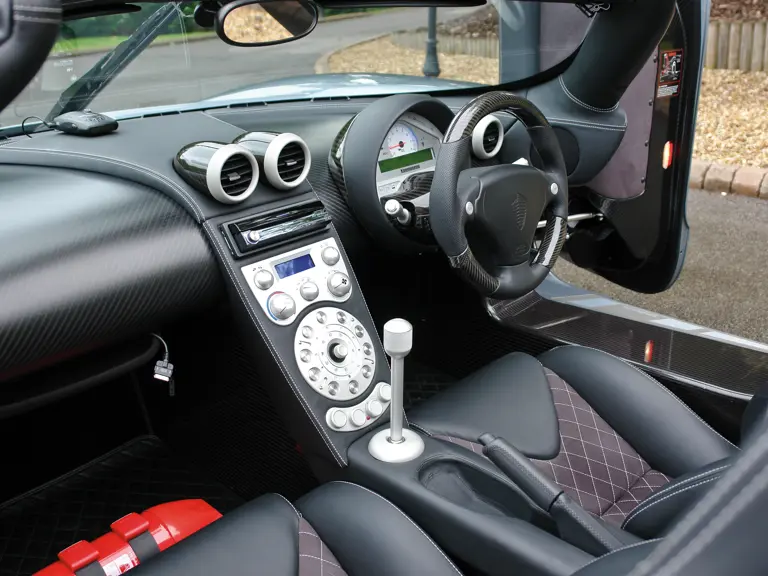
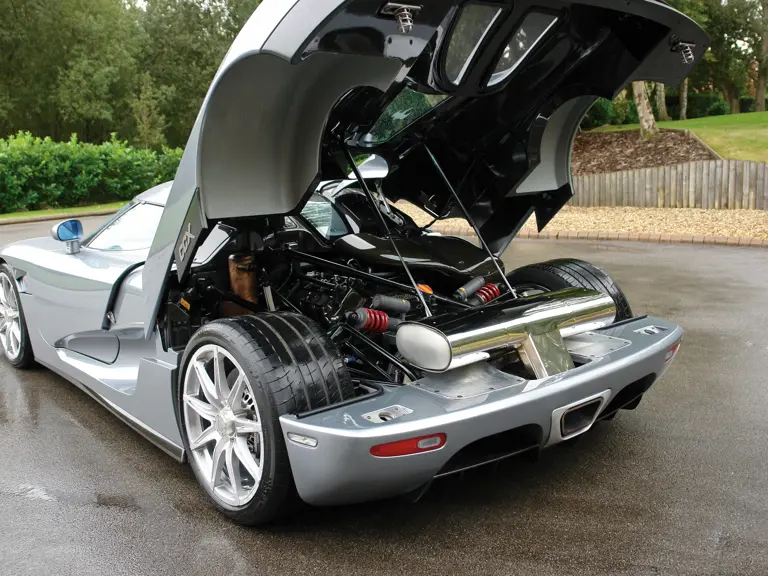
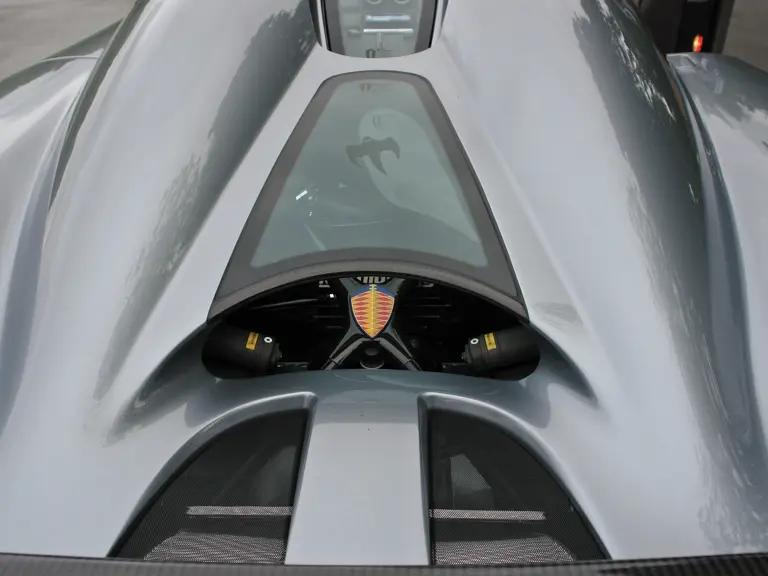
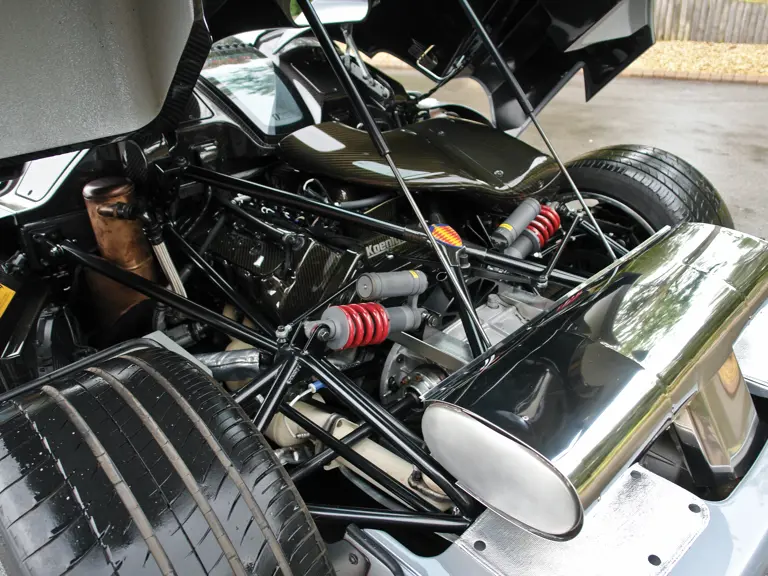
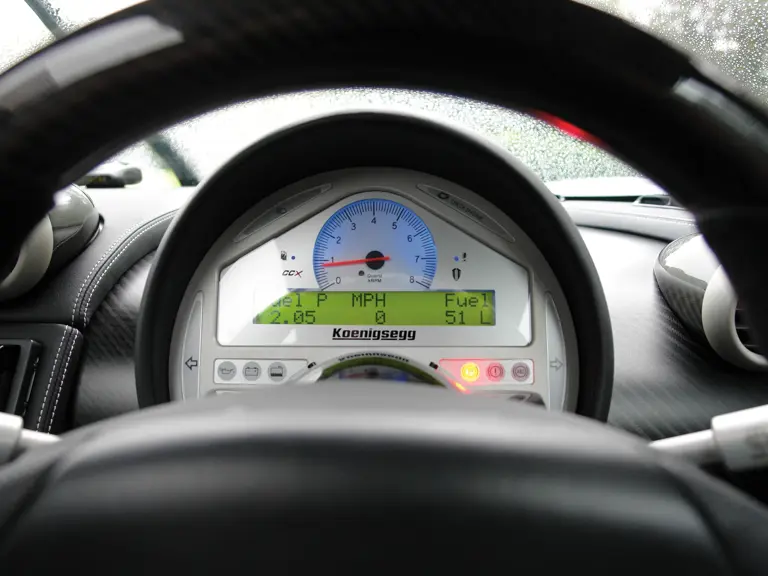
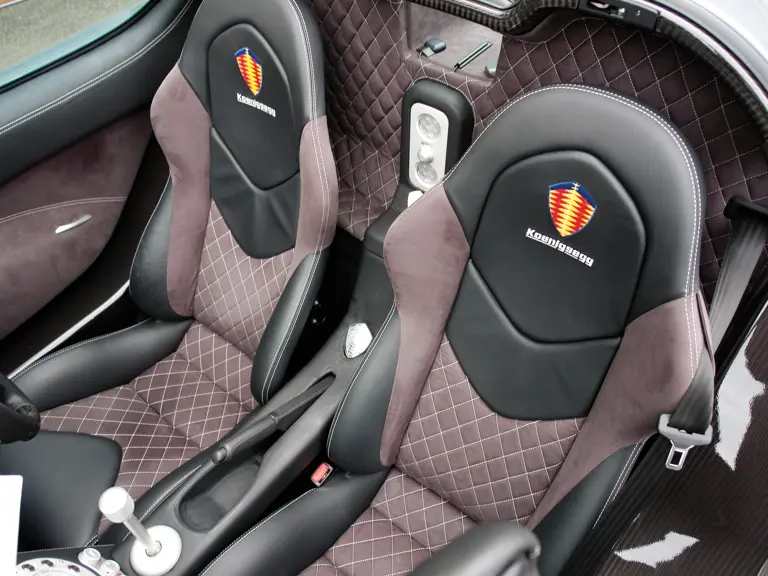

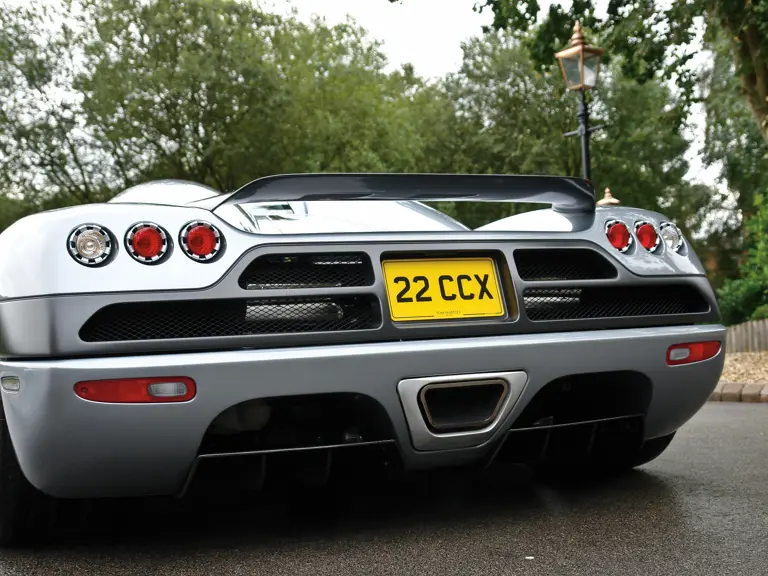

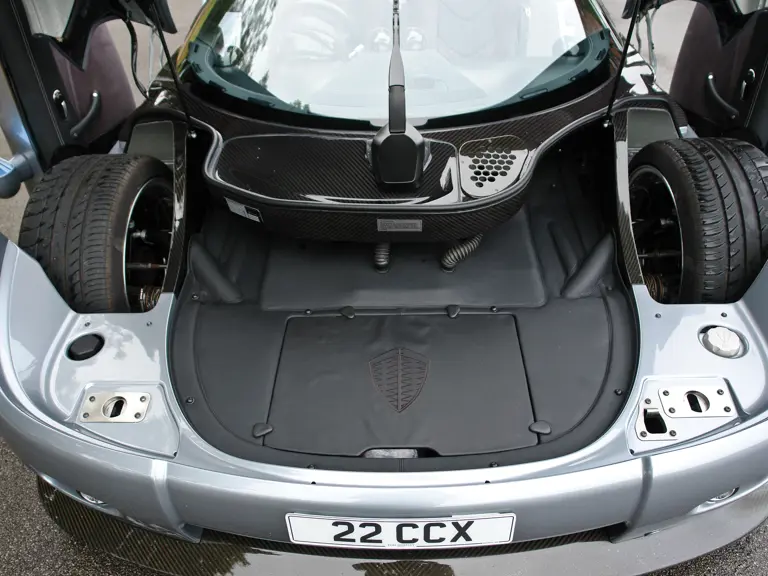

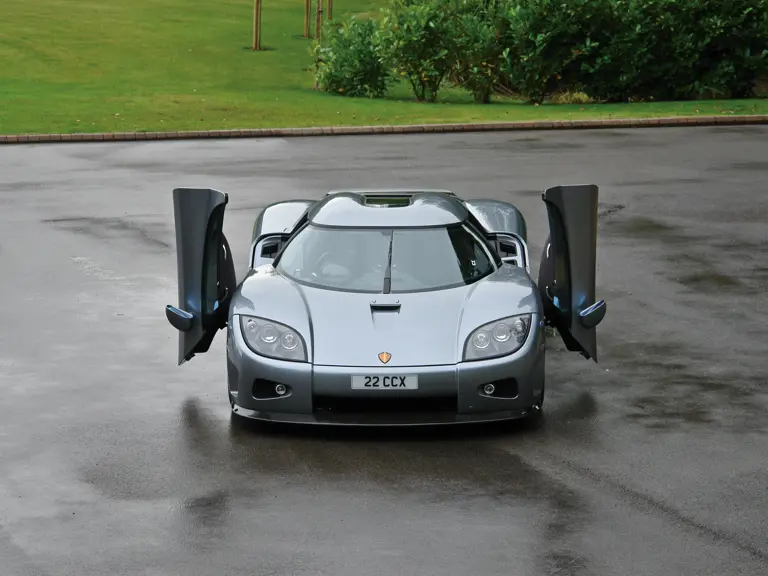

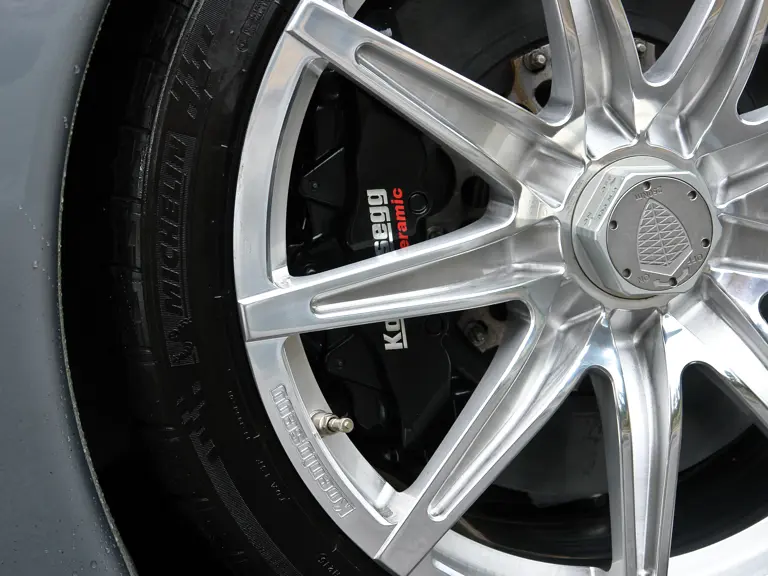
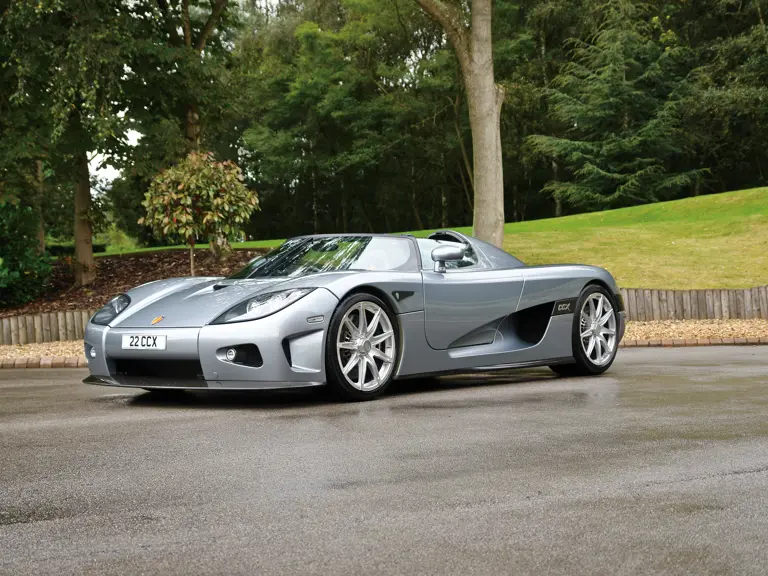

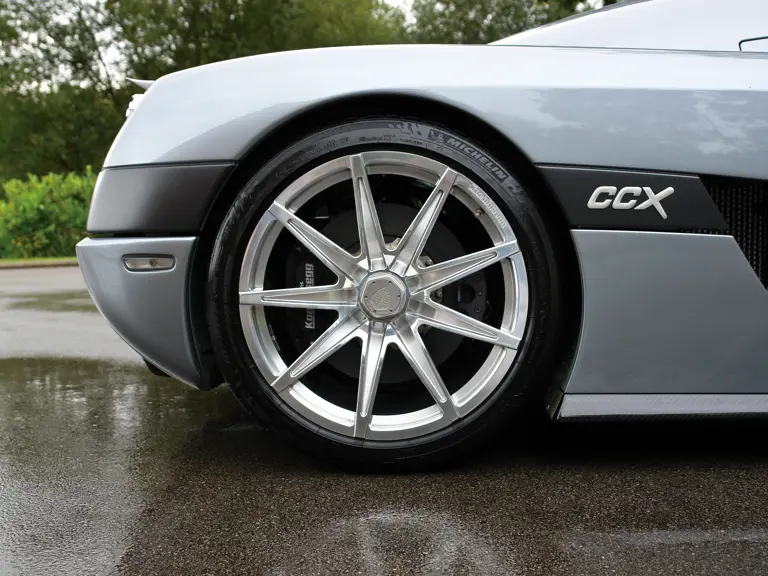
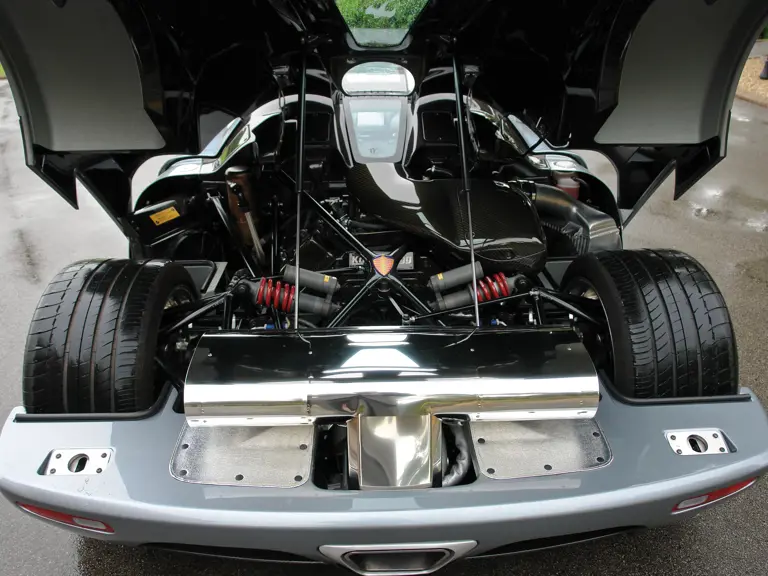
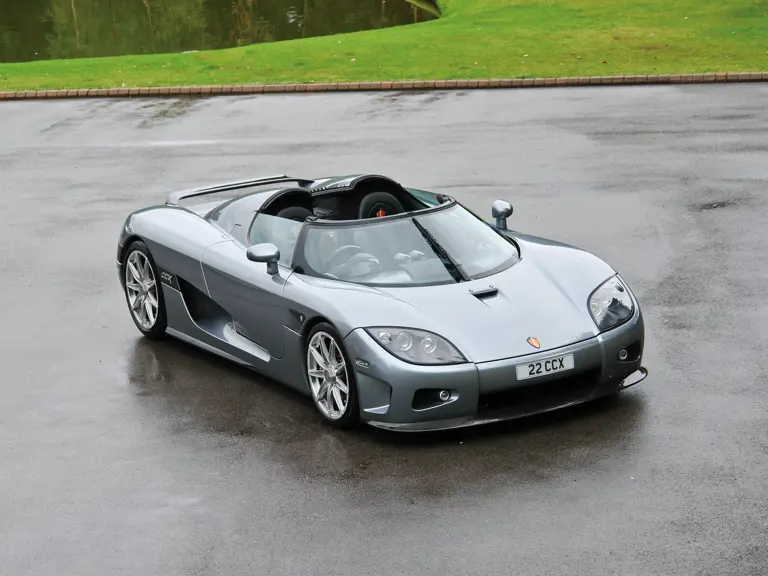
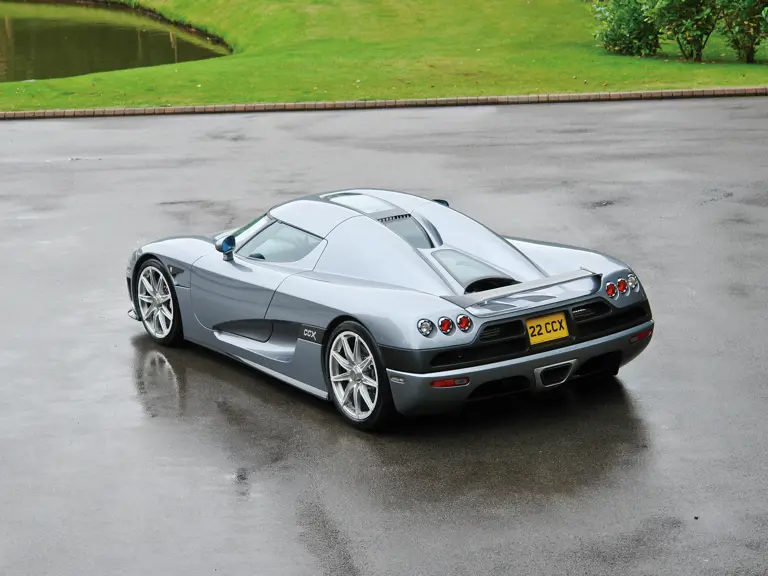

 | London, United Kingdom
| London, United Kingdom
